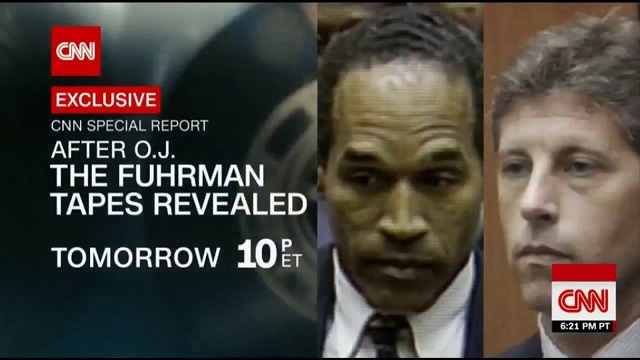COVID-19
So. Who gets the ventilators?

This is posted with permission from the author, Neil MacDonald. It is originally posted at neilmacdonald.me
So. Who gets the ventilators?
I wish Sophie Gregoire Trudeau good health, and a complete recovery in her quarantine. The same for the lovely Margaret Trudeau, if she comes down with COVID-19. Both women were at the same speaking engagement in London; presumably, that is where Madame Gregoire Trudeau contracted the virus.
If, heaven forfend, either woman develops the sort of severe respiratory difficulties that have killed other COVID-19 patients, I hope they will both have access to peerless medical care, and a ventilator. Actually, I am certain they will.
One is the prime minister’s wife, the other his mother. Privilege has its privileges.
At the same time – and here comes the kicker – I am not at all certain that, if I or any of my aged relatives come down with the disease in the uncertain and increasingly terrifying weeks to come, there will be ventilators for us. And as one American epidemiologist put it recently, the alternative to ventilation for someone with extreme respiratory symptoms is death. As a despairing Italian physician put it on social media from the horrors of his triage centre in Bergamo: “Every ventilator becomes like gold.”
Here is the math: Health Minister Patty Hajdu says between 30 and 70 per cent of Canadians will likely be infected. The mortality rate of COVID-19 is between two and three per cent. Assuming the optimistic end of Hajdu’s estimate, and the optimistic end of the mortality rate, we are still talking about 225,000 people dying, and, as the despairing Italian physician says, the diagnosis is always the same: Bilateral interstitial pneumonia. Meaning those patients’ lungs are so badly compromised the only thing that has a chance of saving them is a ventilator, or mechanical breathing apparatus. It alone can infuse the lungs with enough oxygen to maintain life.
Now: We are told Canada has about 5,000 ventilators. That’s one ventilator for every 45 of those dying patients. Unless Canada somehow acquires a lot more of the machines, and the entire world is now chasing them, there will be rationing. That is what has been happening in Italy. Doctors there have been given the ghastly job of deciding who receives ventilation, and who is sent home to meet their fate.
Now, let’s add something else to the equation: In Canada, the law prevents citizens from paying for core medical care, which a ventilator surely is. In principle, ventilators will be rationed, well, rationally.
But that’s not how the system really works.
In Canada, influence and power get you to the front of the line. Does anyone really believe that cabinet ministers or premiers or captains of industry or very senior government officials sit in waiting rooms, or have a hard time finding a family doctor? Or that those of us with professional or family connections aren’t treated as privileged entities?
So the big question – the crucial, life-or-death question as this virus tears through the population – will very quickly be this: who gets the ventilators?
No doubt, an attempt will be made to lay down a set of objective criteria. They probably already exist. It makes sense to ventilate patients who stand the best chance of surviving. A physician friend in Italy unilaterally decided to send very old people home, along with anyone whose health was already severely compromised by previous morbidities.
But imagine the pressure on a Canadian doctor, or hospital dependent on government funding, when the aged relative of a very powerful politician needs ventilation. Or a very rich person who has donated generously to the hospital. Or the mother or father of a person whose role in the economy is considered so crucial that he or she must not be distracted by familial worries.
Jane Philpott, Justin Trudeau’s first health minister, once declared that not being able to buy your way to the front of the line is a “core Canadian value.” The remark was rather gormless, I thought at the time, given the reality of the system. Doctor friends of mine thought it was hysterical.
But the big test is coming. The public deserves to know precisely how lifesaving care will be allocated. The public has a right to transparent fairness.
My guess: fairness and objective allocation of resources will slam into the wall of privilege. We shall see. We shall also see how intrepid the media is on this subject. So far, it hasn’t been.
From neilmacdonald.me

Neil Macdonald spent 43 years reporting on politics, wars, elections, revolutions, booms, crashes, coups, and the struggles of ordinary human beings in the unforgiving, bewildering rush of history.
He worked as an editor and reporter in three newspapers before moving to CBC News, for which he covered Quebec before moving to Parliament Hill, then abroad as a foreign correspondent in the Middle East and Washington, DC., and finally as the CBC’s opinion columnist.
He has stood in Iraq watching missiles strike, in Bethlehem watching people welcome the new millennium, in Jerusalem watching an intifada erupt, and in Chicago watching Barack Obama accept the American presidency. He followed the Pope through the Holy Land, tracked down Hitler’s last general in Europe, covered the triumphant arrival and subsequent humiliation of Jean-Bertrand Aristide in Haiti, revealed the plotters who killed Rafiq Hariri in Beirut, and documented the financial horrors unleashed on America’s cities by Wall Street.
He speaks French, having grown up in Quebec, reasonably good English, and sufficient Arabic. He lives in Ottawa.
Learning at home? Here’s a list of links to take you on a “Virtual Field Trip”
Alberta
Coutts Three verdict: A warning to protestors who act as liaison with police

From the Frontier Centre for Public Policy
By Ray McGinnis
During the trial numbers of RCMP officers conceded that the Coutts Three were helpful in their interactions with the law. As well, there didn’t seem to be any truth to the suggestion that Van Huigenbos, Van Herk and Janzen were leaders of the protest.
Twelve jurors have found the Coutts Three guilty of mischief over $5,000 at a courthouse in Lethbridge, Alberta. Marco Van Huigenbois, Alex Van Herk and George Janzen will appear again in court on July 22 for sentencing.
Van Huigenbois, Van Herk and Janzen were each protesting at the Coutts Blockade in 2022. A blockade of Alberta Highway 4 began on January 29, 2022, blocking traffic, on and off, on Alberta Highway 4 near the Coutts-Sweetgrass Canada-USA border crossing. The protests were in support of the Freedom Convoy protests in Ottawa.
Protests began due to the vaccine mandates for truckers entering Canada, and lockdowns that bankrupted 120,000 small businesses. Government edicts were purportedly for “public health” to stop the spread of the C-19 virus. Yet the CDC’s Dr. Rachel Wallensky admitted on CNN in August 2021 the vaccine did not prevent infection or stop transmission.
By February 2022, a US court forced Pfizer to release its “Cumulative Analysis of Post-Authorization Adverse Event Reports” revealing the company knew by the end of February, 2021, that 1,223 people had a “case outcome” of “fatal” as a result of taking the companies’ vaccine.
On the day of February 14, 2022, the three men spoke to Coutts protesters after a cache of weapons had been displayed by the RCMP. These were in connection with the arrest of the Coutts Four. Van Huigenbos and others persuaded the protesters to leave Coutts, which they did by February 15, 2022.
During the trial numbers of RCMP officers conceded that the Coutts Three were helpful in their interactions with the law. As well, there didn’t seem to be any truth to the suggestion that Van Huigenbos, Van Herk and Janzen were leaders of the protest.
RCMP officer Greg Tulloch testified that there were a number of “factions” within the larger protest group. These factions had strong disagreements about how to proceed with the protest. The Crown contended the Coutts Three were the leaders of the protest.
During his testimony, Tulloch recalled how Van Huigenbos and Janzen assisted him in getting past the “vehicle blockade to enter Coutts at a time during the protest when access to Coutts from the north via the AB-4 highway was blocked.” Tulloch also testified that Janzen and Van Huigenbos helped with handling RCMP negotiations with the protesters. Tulloch gave credit to these two “being able to help move vehicles at times to open lanes on the AB-4 highway to facilitate the flow of traffic in both directions.”
During cross examination by George Janzen’s lawyer, Alan Honner, Tulloch stated that he noticed two of the defendants assisting RCMP with reopening the highway in both directions. Honner said in summary, “[Marco Van Huigenbos and George Janzen] didn’t close the road, they opened it.”
Mark Wielgosz, an RCMP officer for over twenty years, worked as a liaison between law enforcement and protesters at the Coutts blockade. Taking the stand, he concurred that there was sharp disagreement among the Coutts protesters and the path forward with their demonstration. Rebel News video clips “submitted by both the Crown and defence teams captured these disagreements as demonstrators congregated in the Smuggler’s Saloon, a location where many of the protesters met to discuss and debate their demonstration.” Wielgosz made several attempts to name the leaders of the protest in his role as a RCMP liaison with the protesters, but was unsuccessful.”
However, the Crown maintained that the protest unlawfully obstructed people’s access to property on Highway 4.
Canada’s Criminal Code defines mischief as follows in Section 430:
Every one commits mischief who willfully
(a) destroys or damages property;
(b) renders property dangerous, useless, inoperative or ineffective;
(c) obstructs, interrupts or interferes with the lawful use, enjoyment or operation of property; or
(d) obstructs, interrupts or interferes with any person in the lawful use, enjoyment or operation of property.
Robert Kraychik reported that “RCMP Superintendent Gordon Corbett…cried (no comment on the sincerity of this emoting) while testifying about a female RCMP officer that was startled by the movement of a tractor with a large blade during the Coutts blockade/protest.” This was the climax of the trial. A tractor moving some distance away from an officer in rural Alberta, with blades. The shock of it all.
No evidence was presented in the trial that Van Huigenbos, Van Herk and Janzen destroyed or damaged property. Officers testified they couldn’t identify who the protest leaders were. They testified the defendants assisted with opening traffic lanes, and winding down the protest.
By volunteering to liaise with the RCMP, the Crown depicted the Coutts Three as the protest leaders. Who will choose to volunteer at any future peaceful, non-violent, protest to act as a liaison with the policing authorities? Knowing of the verdict handed down on April 16, 2024, in Lethbridge?
Ray McGinnis is a Senior Fellow with the Frontier Centre for Public Policy. His forthcoming book is Unjustified: The Emergencies Act and the Inquiry that Got It Wrong.
COVID-19
Trudeau gov’t budgets additional $36 million for its COVID vaccine injury program
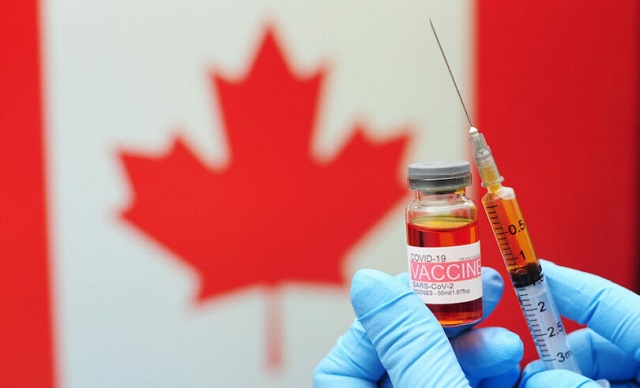
From LifeSiteNews
The Liberal government of Prime Minister Justin Trudeau’s newly tabled budget has earmarked an additional $36 million for its Vaccine Injury Support Program, in addition to the $11 million it has already paid out to those hurt by the COVID shots.
The Liberal government of Prime Minister Justin Trudeau’s recently tabled 2024 budget has earmarked $36 million for those injured by the COVID vaccines – vaccines it still insists are safe.
The 2024 budget, which was put forth earlier this week and is likely to pass with New Democratic Party (NDP) support, intends to add $36 million in funding to the nation’s Vaccine Injury Program (VISP), and will be used, at least in part, to settle the growing number of claims made by COVID jab-injured Canadians.
VISP has already paid $11,236,314 to those injured by COVID injections, with the number of people filing claims to the program growing steadily.
The increased funding comes as only 138 claims have been approved for payout out of a total of 2,233 claims made. Some 1,825 claims have thus far been outright rejected.
Despite the need for a federal program to address those injured by the vaccines once mandated by the Trudeau government, Health Canada still says “It’s safe to receive a COVID-19 vaccine following infection with the virus that causes COVID-19. Vaccination is very important, even if you’ve had COVID-19.”
Regardless of the claims of safety by Canadian authorities, data analyzed from the Vaccine Adverse Event Reporting System (VAERS) in the United States shows an increase in myocarditis cases following COVID injections.
The mRNA shots have also been linked to a multitude of negative and often severe side effects in children.
The VISP program was introduced in 2020, right before the rollout of the COVID injections, which were fast-tracked onto the Canadian population by health officials and promoted by all levels of government.
According to the VISP website, the purpose of the program is to “ensure that all people in Canada who have experienced a serious and permanent injury as a result of receiving a Health Canada authorized vaccine, administered in Canada on or after December 8, 2020, have fair and timely access to financial support.”
Officials from Health Canada, as well as all provincial health authorities, are still promoting the COVID injections. This comes despite the fact earlier this year, as LifeSiteNews reported, officials from Health Canada admitted that there is “residual plasmid DNA” in the shots.
In fact, just yesterday LifeSiteNews reported on how a recent announcement from health officials in Alberta recommended yet more COVID shots, even for babies as young as six months old, despite the myriad of reported side effects.
Those injured by the COVID shots have chosen to fight back to try and get fair compensation for their injuries.
Last month, LifeSiteNews reported about a class action lawsuit filed against the Alberta provincial government and the federal government on behalf of Albertans who were “harmed by the COVID-19 vaccines.”
Late last year, LifeSiteNews reported that over 700 vaccine-free Canadians negatively affected by federal COVID jab dictates have banded together to file a multimillion-dollar class-action lawsuit against the Trudeau government.
Overall, the government’s budget looks to spend some $111.2 billion and projects a deficit of about $40 billion, drawing the ire of many top business leaders who have blasted the many tax increases it contains.
-

 Economy2 days ago
Economy2 days agoExtreme Weather and Climate Change
-

 International2 days ago
International2 days agoTelegram founder tells Tucker Carlson that US intel agents tried to spy on user messages
-

 Fraser Institute2 days ago
Fraser Institute2 days agoPowerful players count on corruption of ideal carbon tax
-

 Business2 days ago
Business2 days agoCanada’s economy has stagnated despite Ottawa’s spin
-
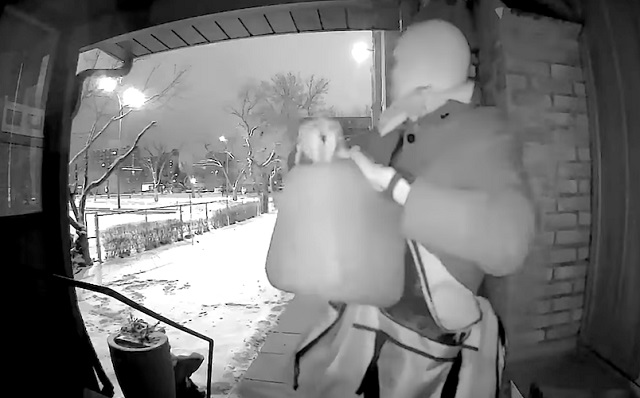
 Crime1 day ago
Crime1 day agoCanadian receives one-year jail sentence, lifetime firearms ban for setting church on fire
-
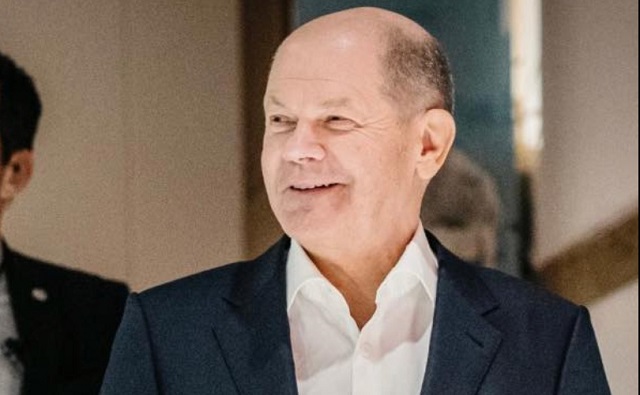
 International1 day ago
International1 day agoGerman parliament passes law allowing minors to change their legal gender once a year
-
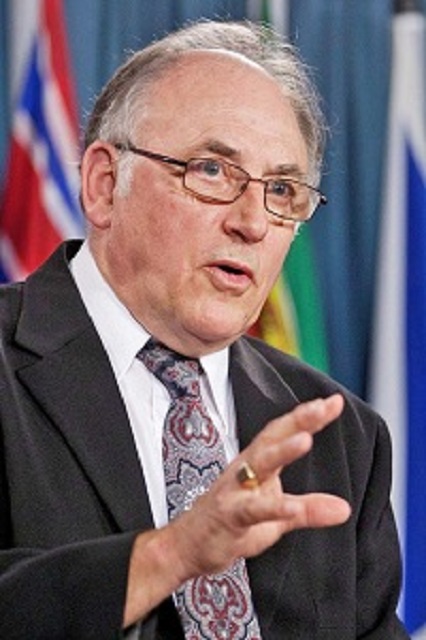
 Frontier Centre for Public Policy1 day ago
Frontier Centre for Public Policy1 day agoPeckford: The legality and morality of our country are no longer aligned
-

 Business2 days ago
Business2 days agoNew capital gains hike won’t work as claimed but will harm the economy

